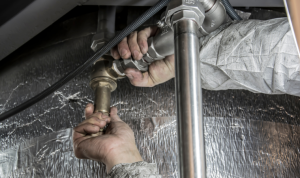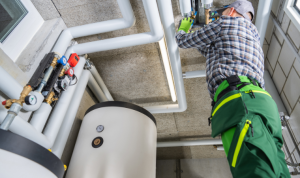Types of Plumbing Systems Explained
Every modern building, residential, commercial, or industrial, relies on a plumbing system to deliver clean water and safely remove waste. But not all plumbing systems are the same. The design, function, and components can vary depending on the building’s size, use, and local infrastructure. Understanding the different types of plumbing systems can help homeowners, property managers, and business owners identify problems, make informed upgrades, or plan new installations more effectively.
1. Potable Water System (Water Supply System)
This is the system that brings clean, safe water into your home or building. It connects to the municipal water supply or a private well and distributes water to fixtures such as sinks, showers, bathtubs, washing machines, and dishwashers.
Key components include:
- Water meter
- Shut-off valve
- Pressure regulator
- Hot water heater
- Pipes and faucets
This system is typically made of copper, PEX, or CPVC piping, and it must be designed to prevent contamination of drinking water, often using backflow preventers and air gaps.

2. Sanitary Drainage System (Wastewater System)
The sanitary drainage system removes wastewater from fixtures and appliances and carries it to either a municipal sewer line or a septic tank.
Main components include:
- Drainpipes
- Vent pipes
- Traps (P-traps or S-traps)
- Sewer lines
This system relies heavily on gravity to move wastewater out of the building. Proper slope, venting, and trap installation are crucial to avoid foul odors, blockages, and backups.
3. Stormwater Drainage System
This system is designed to contain rainwater and surface runoff. It channels water from rooftops, driveways, and gutters into storm drains or retention systems to prevent flooding.
Stormwater plumbing may include:
- Roof gutters and downspouts
- Area drains
- Catch basins
- Storm sewers
Unlike sanitary waste, stormwater doesn’t go through treatment plants in most areas, it’s directed to nearby streams, lakes, or detention ponds. Keeping this system clean is essential to prevent overflow and water damage.
4. Combined Drainage System
In older cities, some buildings are connected to a combined drainage system, which merges both sanitary and stormwater lines. While cost-effective initially, these systems pose risks during heavy rainfall, as the sewer can overflow and back up into homes or streets.
Newer construction typically separates these systems for health and environmental reasons.

5. Gas Plumbing System
While not dealing with water, gas lines are often part of a building’s broader plumbing infrastructure. These systems carry natural gas or propane to stoves, furnaces, water heaters, and fireplaces.
Gas plumbing requires strict adherence to safety codes and should only be installed or repaired by licensed professionals.
Understanding the different types of plumbing systems in your property helps you troubleshoot issues more effectively and plan upgrades wisely. Whether you’re renovating your kitchen, adding a bathroom, or expanding your business, knowing how each system works ensures compliance, efficiency, and safety.
Call for Expert Plumbing Services
Not sure which plumbing system you’re dealing with, or whether it’s working as it should?
Call (207) 814-8908 today for a comprehensive plumbing inspection or service. Whether it’s water, drainage, storm runoff, or gas lines, our licensed professionals have the tools and expertise to get the job done right.
Also Read:
